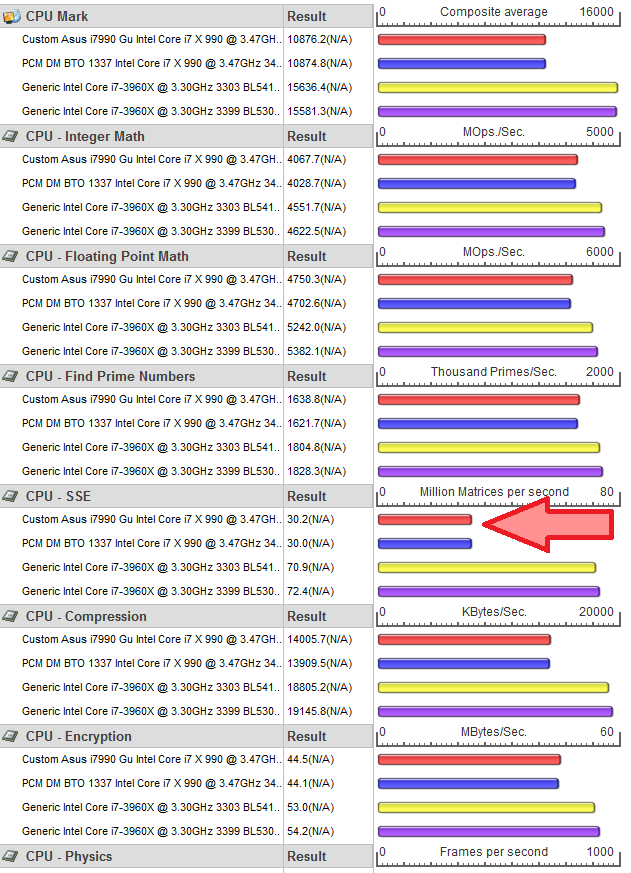It seems odd that they score so much higher than the 990X, yet the real world performance increase is only give or take a few frames per second.
I heard a rumor that PassMark has some sort of maximum real score point, and after it is passed, your score increases nearly exponentially. If this is true, it would certainly explain the SB-E scores.
If not, how are they scoring so high? Is it a bug? Is it real? Thanks in advance!
I heard a rumor that PassMark has some sort of maximum real score point, and after it is passed, your score increases nearly exponentially. If this is true, it would certainly explain the SB-E scores.
If not, how are they scoring so high? Is it a bug? Is it real? Thanks in advance!



Comment